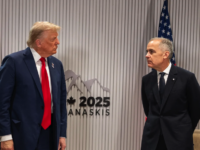After years of dismissing the warnings of likely retaliation, the Canadian government caved last night on the digital services tax. Faced with the prospect of the U.S. suspending trade negotiations, Finance Minister François-Philippe Champagne announced that the government would drop the DST altogether, payments scheduled for Monday would be cancelled, and legislation will be forthcoming to rescind the legislation that created it in the first place. Over the weekend, I wrote about the repeated warnings that the DST was a serious trade irritant with the U.S. that cut across party and presidential lines. While ignoring the risks was bad enough, I argued that Canada played its DST card too early. Rather than delaying implementation in the hopes of incorporating it into a broader trade deal with U.S., it marched ahead, leading to an entirely predictable response from U.S. President Donald Trump. That left Canada in a no-win situation: stick with the DST but face the prospect of higher tariffs or embarrassingly drop the DST (and $7.2 billion in revenue over five years) with only restarting negotiations that were on until government overplayed its hand to show for it.
Post Tagged with: "trump"
Ignoring the Warning Signs: Why Did the Canadian Government Dismiss the Trade Risks of a Digital Services Tax?
U.S. President Donald Trump announced yesterday that he was suspending trade negotiations with Canada due to the imminent implementation of the digital services tax (DST). The result could be increased tariffs on Canadian products and a stalemate on many of the current trade battles between the two countries. This result should not come as a surprise. Indeed, the prospect of a trade war over the DST has been readily apparent for years. In my Law Bytes podcast episode in May on Canadian digital policy under Prime Minister Mark Carney, it was the top short term issue (I did not anticipate burying lawful access in a border bill).
Just prior to Trump’s inauguration in January, I wrote:
The Law Bytes Podcast, Episode 228: Kumanan Wilson on Why Canadian Health Data Requires Stronger Privacy Protection in the Trump Era
The craziness of the Trump administration relationship with Canada was on full display this past week as seemingly every day involved some form of policy change on tariffs – first on, then slightly delayed for some goods, then slightly delayed for more goods and by week’s end threats of new tariffs. Given the uncertainty, I recently co-wrote an op-ed in the Globe and Mail together with Dr. Kumanan Wilson that sought to put the spotlight on another issue that could come to the fore if the economic battle moves beyond tariffs to other issues. In this case – privacy, data localization and health data.
Dr. Wilson is a specialist in General Internal Medicine at The Ottawa Hospital, Chief Executive Officer/Chief Scientific Officer, Bruyère Research Institute, a Professor and Faculty of Medicine Clinical Research Chair in Digital Health Innovation at the University of Ottawa and member of the University of Ottawa’s Centre for Health Law, Policy and Ethics. He joins the Law Bytes podcast to discuss why we should be paying attention to health privacy, AI and the location of our data.
Canadian Health Data Requires Stronger Safeguards With Lost Canada-U.S. Trust
With today’s implementation of tariffs on both sides of the Canada-U.S. border, the level of mistrust between our countries has grown, whether urgent calls to “Buy Canadian” or boos and catcalls at the playing of the American national anthem. Should we continue down this path, Mr. Trump will surely seek to exploit more of Canada’s potential vulnerabilities. Last week, I co-wrote an op-ed with Kumanan Wilson on one such vulnerability: our health data, whose protection has yet to attract much attention but which could emerge as an issue.
Why the Trump Trade Threats Will Place Canadian Digital, Cultural, and AI Policy Under Pressure
If the first salvo fired by U.S. President Donald Trump in the form of a threatened 25-per-cent across-the-board tariff on Canadian goods (excluding energy, which would face a 10-per-cent levy) is a preview of future trade disputes, retaliatory tariffs alone will not solve the problem. Canada will need to turn to eliminating interprovincial trade barriers, rely on European and Asian trade deals to engage in new markets, and prepare for the prospect that long-standing Canadian regulations and market restrictions may face increasing pressure for an overhaul.
My Globe and Mail op-ed argues the need for change is particularly true for Canadian digital and cultural policy. Parliamentary prorogation ended efforts at privacy, cybersecurity and AI reforms and U.S. pressure has thrown the future of a series of mandated payments – digital service taxes, streaming payments and news media contributions – into doubt. But the Trump tariff escalation, which now extends to steel and aluminum as well as the prospect of reviving the original tariff plan in a matter of weeks, signals something far bigger that may ultimately render current Canadian digital and cultural policy unrecognizable.











